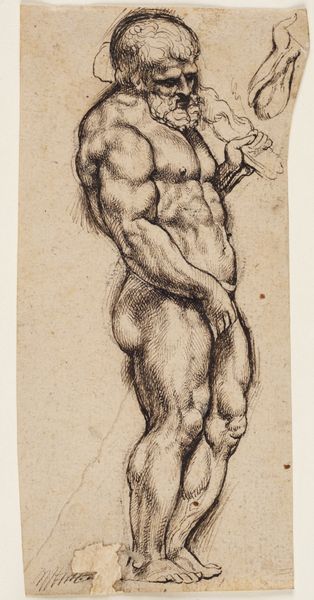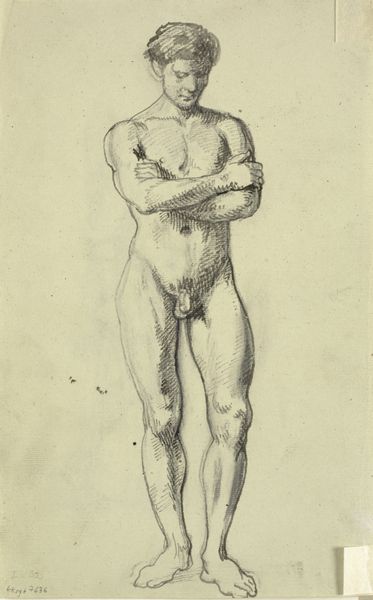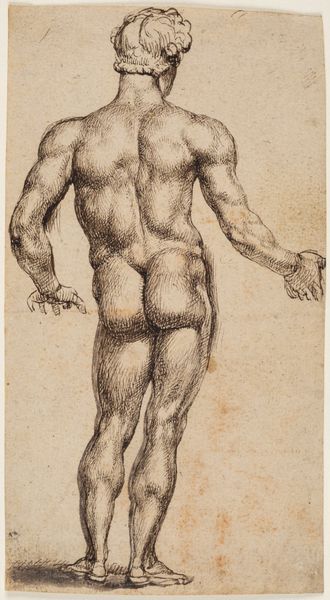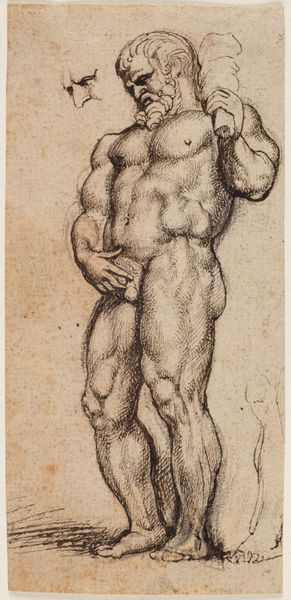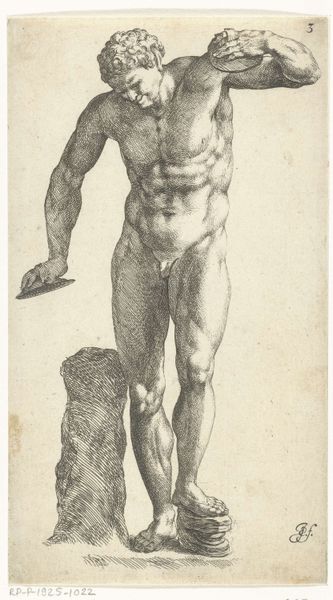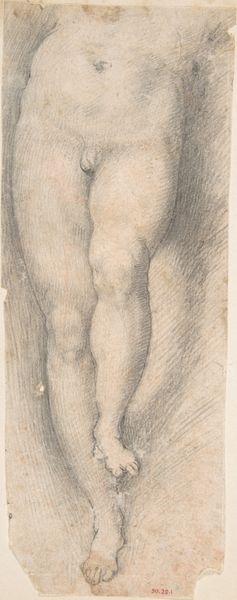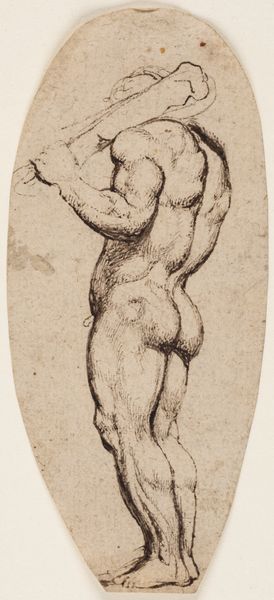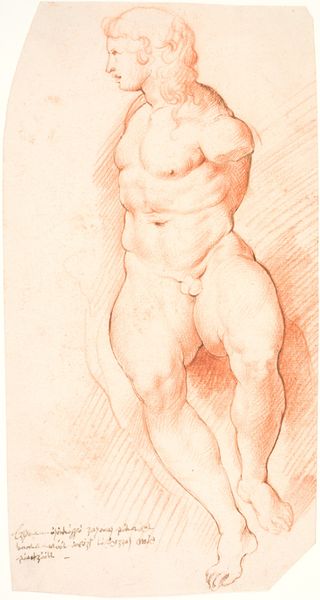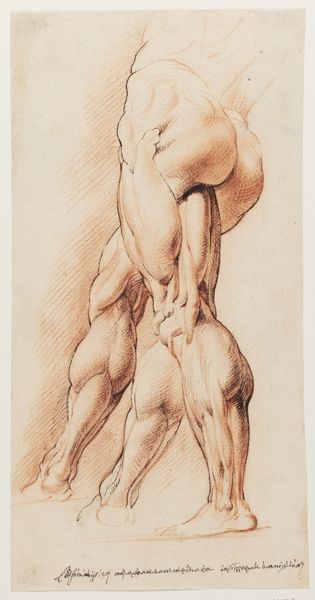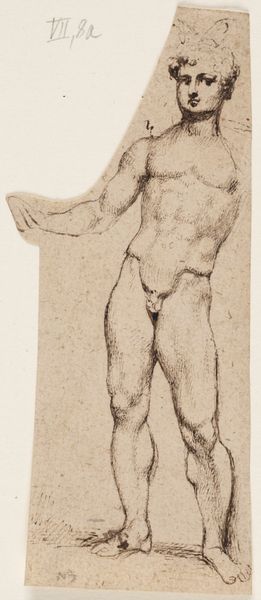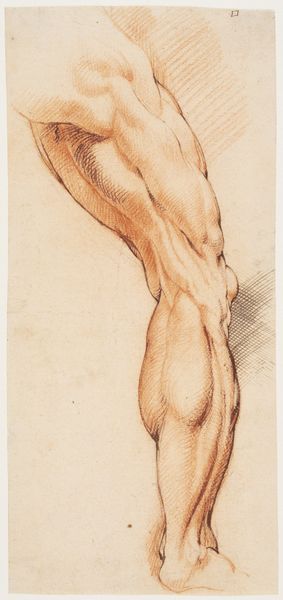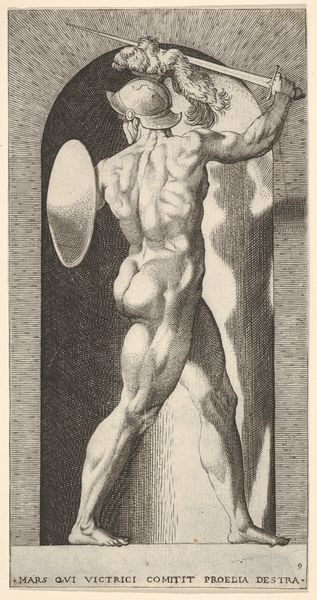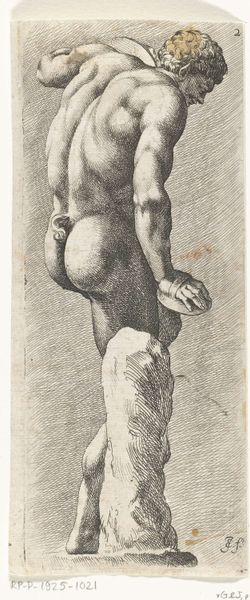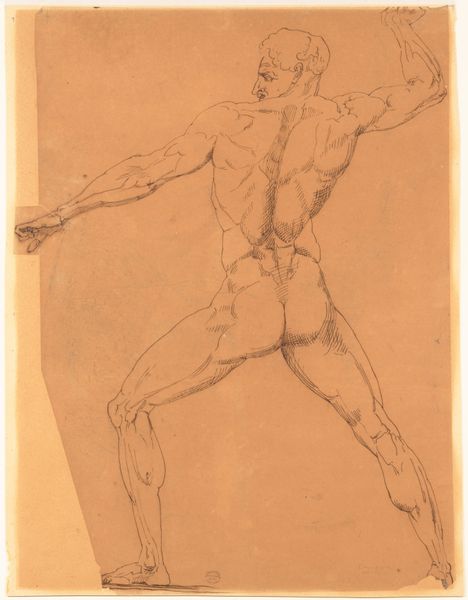
drawing, print, etching
#
drawing
#
baroque
# print
#
etching
#
figuration
#
nude
Dimensions: 3 9/16 x 2 1/16 in. (9.1 x 5.2 cm) upper left and bottom right corners cut
Copyright: Public Domain
Wenceslaus Hollar made this etching of a "Naked Male Torso Seen From Behind" in 1645. During this period, European society was deeply shaped by the Renaissance’s rediscovery of classical art, influencing how artists perceived and represented the human body. Hollar, an engraver active during the Baroque era, often reproduced works by earlier masters. This print acknowledges its source, inscribed "Leonar: da Vinci inu:" indicating it was made after a work by Leonardo da Vinci. Hollar’s print captures the anatomical detail and idealized form characteristic of Renaissance art, yet the medium of etching lends it a distinctive texture, a contrast to the smooth surfaces typically seen in paintings or sculptures of the period. The depiction of the male nude has complex roots in Western art, often tied to ideals of beauty and strength, yet also implicated in issues of gender and power. By recreating da Vinci’s study, Hollar engages with these historical representations, inviting viewers to consider how such images continue to shape our understanding of the body.
Comments
No comments
Be the first to comment and join the conversation on the ultimate creative platform.
